
Hand-cut alkaline noodles
Thick, chewy noodles that work very well for a variety of dishes.
Equipment
- rolling pin
- pasta roller
- chefs knife, preferably over 9 inches long
Ingredients
Sodium Carbonate
- 1/4 cup baking soda makes more sodium carbonate than you need for this recipe, save extra for later use
Noodles
- 130 grams luke-warm water
- 300 grams bread flour
- 1/2 tsp. prepared sodium carbonate
- extra flour, for dusting the pasta sheets
Instructions
To make the sodium carbonate
- Spread the baking soda on a baking sheet and bake in a 300 Fahrenheit oven for 1.5 hours. The baking soda is now sodium carbonate. Allow sodium carbonate to cool and store in an airtight container.
To make the noodles
- In a mixing bowl, dissolve 1/2 tsp prepared sodium carbonate in the water.
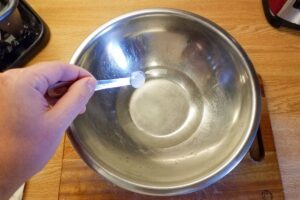
- Add the bread flour and start to mix the dough by hand. The dough will be very shaggy and take a good bit of effort to form into a dough ball.
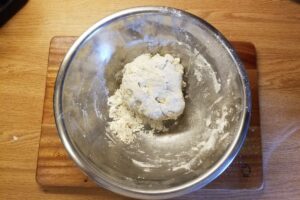
- Once all the dry flour has absorbed into dough, turn the ball onto a flat, unfloured surface and knead for approximately 10 minutes. This dough will be very stiff and dry, that is a good thing. Do not be tempted to add more water unless absolutely necessary. A dry dough will yield a noodle that has a much better chew. Notice how this dough never formed a perfectly smooth ball after kneading. This is preferable.
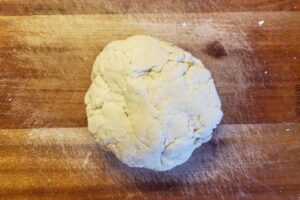
- Wrap the dough in plastic wrap and let rest for 2 hours at room temperature or overnight in the fridge.
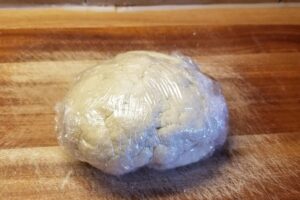
- Remove dough from plastic wrap and use a rolling pin to flatten the dough ball to a thickness that will pass through the widest setting of your pasta machine.
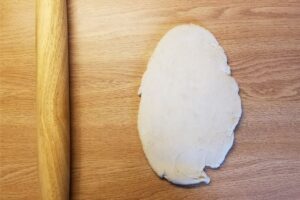
- Pass the dough through the widest setting of your machine.
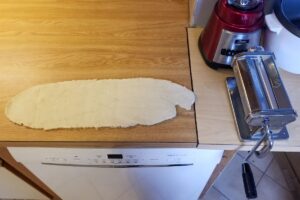
- Pass this sheet through the next two thickness settings on your machine.
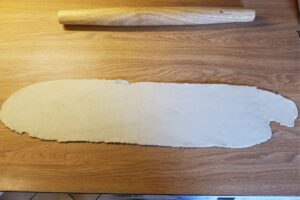
- Fold edges and ends inwards in order to "square up" the sheet of pasta.
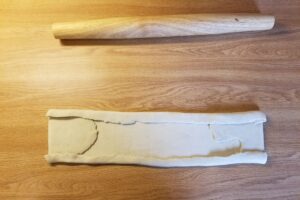
- Set the pasta machine back to its widest setting, pass the "squared up" sheet through once and then fold in half lengthwise.

- Starting at the widest setting again, pass this sheet through the machine, one step at a time through thinner and thinner settings, until the sheet is about 2 mm thick (a bit thicker than a quarter dollar coin).
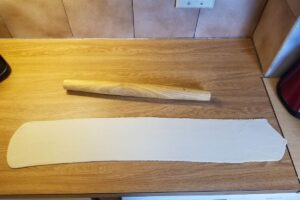
- Cut this sheet into roughly 4 equal sections. The long axis of these sheets will be the length of your noodles.
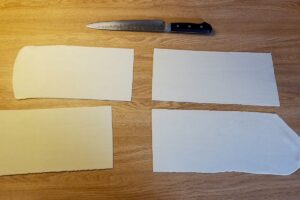
- Apply a very generous dusting of flour to both sides of each sheet and stack them up. You need to add enough flour so the noodles will not fuse together as you cut them.
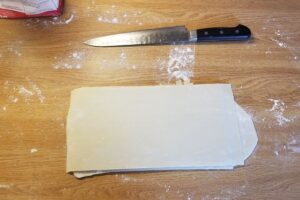
- Fold this stack in half lengthwise. This last fold is made so you can easily cut the whole length of the noodle in one motion (unless you happen to have a VERY long knife).
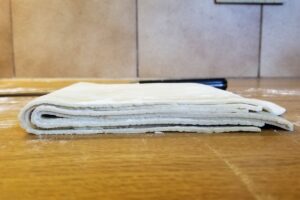
- Turn the stack of noodles so that the fold is facing away from you and cut the noodles in one straight down motion. Try to make the cuts approximately the same thickness as the noodle sheets.
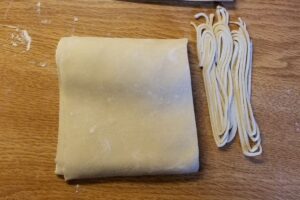
- After cutting all the noodles, go through and separate the noodles with your fingers. If some noodles stick together, pull them apart. Add another dusting of flour to your pile of noodles and toss everything in order to coat all the noodles in a bit of flour. This will keep the noodles from sticking together as they sit.

- Separate the noodles into 2 equal piles (roughly 200 grams each) and place on a lightly floured plate. wrap in plastic wrap and store in the fridge for up to 24 hours.